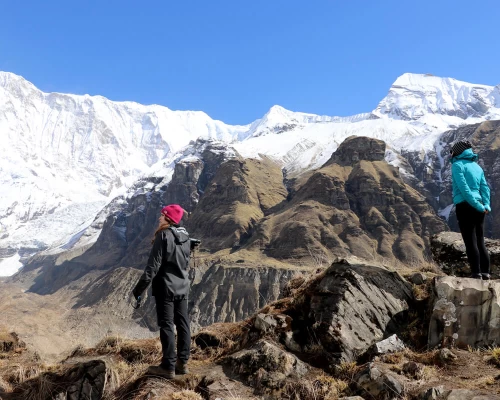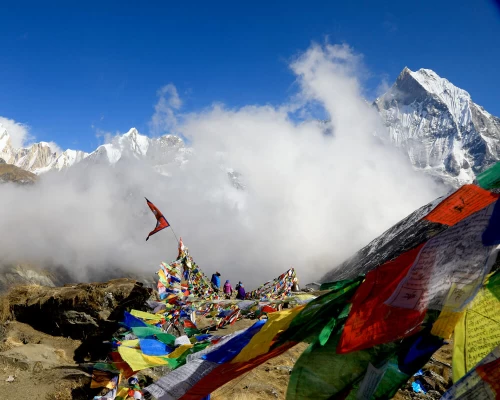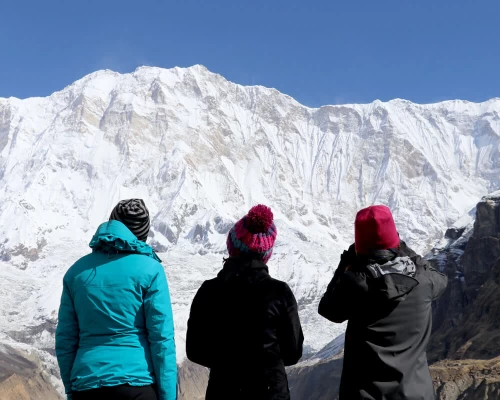The Annapurna Base Camp Trek is among the most popular journeys in Nepal. The Annapurna region, situated in northwest Nepalis part of the Annapurna Conservation Area. It is home to several of the highest peaks in the world. Embarking on this once-in-a-lifetime trek, you will pass through local villages and be exposed to a diverse array of flora and fauna until you reach the breathtaking Annapurna Base Camp at 4130 meters. Few footpaths bring you as close to 7000m-8000m peaks as the Annapurna Base Camp Trek. At the climax, you will find yourself encompassed by pristine mountains, which form a natural amphitheater around you.
After traveling to Pokhara and briefly preparing for the trek to this charming city, we start the path from Nayapul, passing through Ghorepani. Traveling through Ghorepani, your body will be able to get adapt and acclimatize to the high altitude. One stopping point, Poon Hill, offers a majestic panoramic view of the peaks in the Annapurna and Dhaulagiri regions. If you have any interest, the sunrise at Poon Hill is beautiful beyond compare. From the viewpoint, you can see Annapurna South(7219m), Barasikha, Hiunchuli(6441m), Nilgiri(7060m), and Machhapuchhre (also known as Fishtail Mountain). Macchapucchre (6993m) is revered as sacred to the god Shiva and is therefore off-limits for climbing.
For the first several days, the trail guides you through terraced hillsides, lively forests, and alluring local villages. Then, dense sub-tropical forests dominate the landscape. Leading up to Annapurna Base Camp, you are surrounded by alpine meadows and rocky outcroppings. Finally, you will ascend to the base camp, a glacial basin surrounded by an incredible mountain-walled fortress. From this point, you will trek back down to Jhinu Hot Spring, a natural skin cleanser and muscle reliever. On the final day of the trek, you descend to Nayapul and celebrate the completion of the trek in Pokhara. The views throughout this trek are unforgettable. Equally fascinating, throughout the trek, you will be exposed to the rich culture of the Gurung and other ethnic villages. The Annapurna Base Camp Trek rivals the Everest Base Camp Trek in terms of popularity and is often listed as one of the top 10 treks in the world. It is a true delight that should not be missed!
Trekking is possible throughout the year, but Spring (March to May) and Autumn (September to November) provide the best weather. During the Spring, there is a bit more color and the rhododendrons are blooming, and in the Autumn months, the skies are generally clearer. The Annapurna Base Camp Trek requires fitness and acclimatization to avoid acute mountain sickness. Breeze Adventure arranges the trek with complete management. Please, feel free to contact us for more detailed information.









